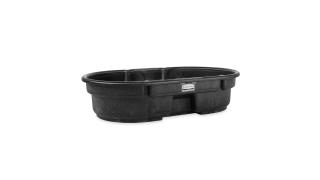




Jay Angler wrote:I was given a pair of 50 US gallon stock tanks -

My hubby installed ball valves on both. The one I use one for Muscovy ducks, which free-range, has a "T" leading to two 1 1/4" pipes which I drilled holes in, so when I want to drain the tank, it spreads most of the water nicely, before I have to tip the rest out and rinse. I move this one around the field to "irrigate" the areas that need it.
Thanks that is helpful. I looked up your tank dimensions. It is 1 foot deep. One of the questions I have been trying to figure out is how deep to make it. The duck legs don't extend too deep underwater it sounds like?
Because of space and being in an already water rich environment I am not inclined to make the tank too large for them (given the space I would love to have a pond...).
Your drainage system sounds useful to consider. I like the mobility of it. Move the empty tank, fill, ducks swim, etc., they fertigate with the water where you direct it.
A parallel question with the water management is how to apply it to garden beds. Perennials is easy, but it sounds like from my reading that even though duck water/manure is not hot like a chickens you still would not
apply it to foliage of your annuals.
The plumbing issue, Jay. Your 1.25" PVC drain does not clog or do you have to filter it? Matter of making the openings large enough? Wood chips somehow ending up in the pipe might be my biggest worry.
Thank you for the feedback.


Larisa Walk wrote:We have 2 ducks. Their coop has a concrete floor covered with a rubber floor mat. We use leaves in the winter and all year for nesting. The floor is cleaned daily with a squeegee and big "dust" pan and fresh leaves applied as needed. They have access outdoors except in the coldest Minnesota weather when they prefer staying inside. We have a small greenhouse attached to the coop that they can access when the weather is too cold, even having occasional baths in a rubber tub on sunny days. They seem happy with the setup.